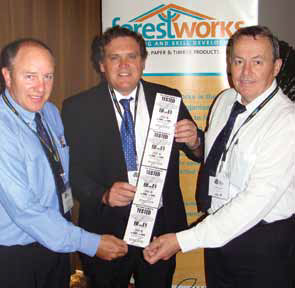Flat pack book shelves
sourced in Asia and
purchased on the open
market in south east Queensland have failed
Australian standards for formaldehyde emissions.
In one sample laboratory tested by EWPAA last month, emissions
were above 3 mg/L. All samples tested were above the
safe emission level of E1, recommended by the federal
government’s National Industrial Chemicals Notification
and Assessment Scheme (NICNAS).
“This random testing has revealed unsafe materials are
still entering the Australian market – a potentially serious
problem,” EWPAA general manager Simon Dorries said.
NICNAS is responsible for the assessment and safe use of
industrial chemicals. It has advised construction workers
and wood panel users against the use of products that
contain formaldehyde exceeding the low emission limits of
E0 and E1.
Products meeting E0 and E1 are considered safe in all
applications including indoor and poorly ventilated
applications.
A report by NICNAS has detailed the potential health hazards
associated with formaldehyde exposure from pressed wood
products that fail to meet low emission standards.
Random testing has revealed
unsafe materials are still entering
the Australian market
“This notice is very comforting for the wood processing
industry that for many years has battled against marketdamaging
high emission imported materials such as flat
panel products that fail to meet Australia’s low emission
standards,” Mr Dorries said.
“Independent routine testing of imported panels
purchased in the open market for formaldehyde emissions
continues to show a disturbing failure rate when compared
to acceptable low emission limits.”
“More importantly, product is seldom branded to identify
to the consumer low and high emission product as required
by Australian standards. Furthermore, some of the labelling
claims that identify product as low emission are highly
questionable.”
Mr Dorries said the EWPAA strictly maintained JAS-ANZ
accredited certification schemes that guaranteed its
members’ factories complied with the Australian standards
|

When you’re on a good thing, stick to it ..
Simon Dorries, EWPAA general manager
(centre) rolls out the green label
campaignon emissions with
Furnishing Industry Association
of Australia’s general manager
Dean Brackell and CEO Martin Lewis.
on low formaldehyde levels. The association carries out
regular laboratory tests in its NATA-accredited laboratories
for formaldehyde emissions from all certified products
manufactured in the Australasian region.
The construction industry and users of wood components
have been notified to refer to the NICNAS material safety
data sheet before purchasing any pressed wood products.
The Information Sheet No 30 refers to Australian standards,
labelling and product certification information available
from the EWPAA.
The current national occupational exposure standard for
formaldehyde is 1 ppm 8-hour time weighted average
(TWA) and 2 ppm short-term exposure limit (STEL).
The EWPAA maintains two NATA-accredited laboratories to
test for formaldehyde emissions. Formaldehyde emissions
for all EWPAA certified products are tested on a monthly
basis. The schemes are accredited by the Joint Accreditation
System of Australian and New Zealand (JAS-ANZ).
The average formaldehyde emission for all structural and
Type A exterior plywood products produced by EWPAA
certified mills is only 0.14mg/L or one-third the permitted
level for E0 and approximate to the natural formaldehyde
emission from timber.
Visit www.nicnas.gov.au and go to publications/information.
Source: AWISA The Magazine - Autumn 2013,
Published by the Australian Woodworking Industry
Suppliers Association Limited
|